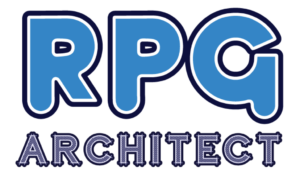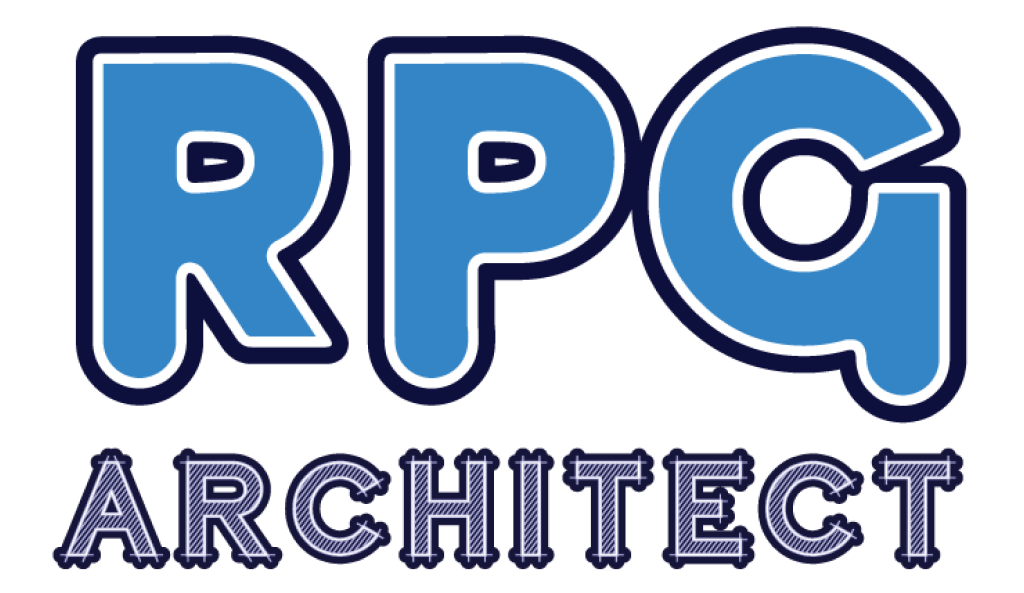March was an exceptionally busy month — so let’s get started!
This month had a lot of focus at the beginning to make the physics work cleaner and better overall. There is a large added stability in it, which hopefully has gone more noticed. We’ll be pushing out a “Platformer” example in the next month, hopefully — as well as another “secret” sample project.
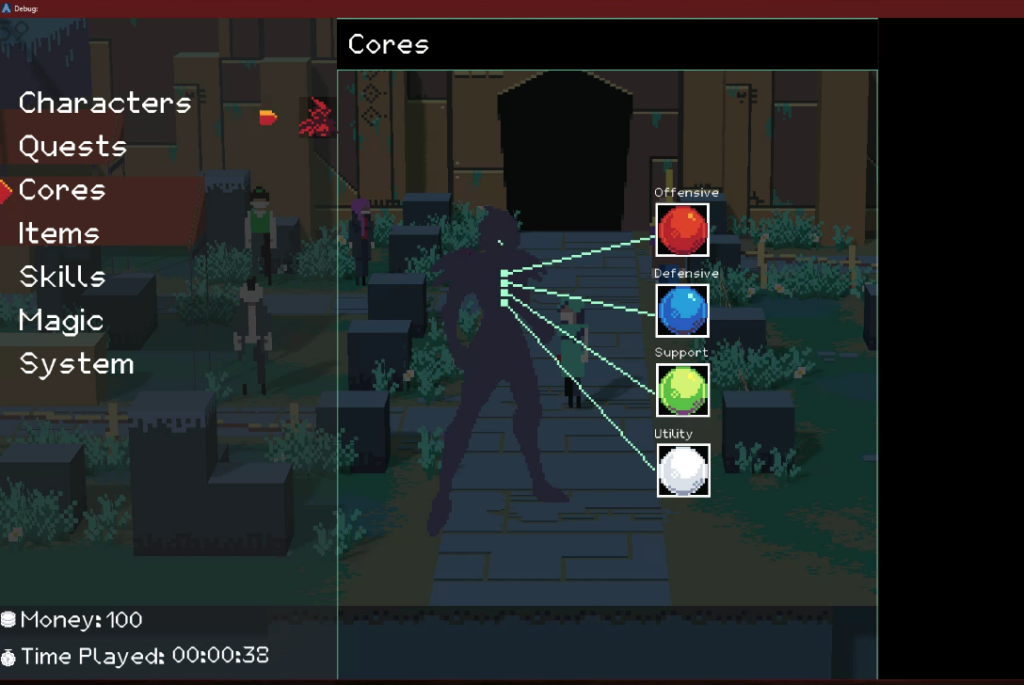
Virtual keys got a refactor as well — which now support touch and mouse controls. The work has been done to eventually add in game controllers as well. Game controllers are prioritized for right after Projections are built. Based on the kanboard, that looks to be about a couple months off, unless there are pressing requests for it sooner.
The OSX version of RPG Architect got a number of updates to clean it up (after Linux got some much-needed love last month) and look mostly native. The menus in OSX will remain the way they are for the foreseeable future, since a native implementation would require an extensive amount of refactoring work when things are otherwise functional.
The Party got a significant overhaul — characters can now be added to the party with script, as well as recovery of the party (similar to Characters). A number of visuals have also been exposed on different components that can be bound to User Interfaces, such as Shop Items, Equipment, and so forth. Master Volume for Sound and Music were added, as well as methods of controlling them. Several commands that previously operated solely on numbers (e.g. Wait Command, Alter Camera, etc) for things like time and duration, now support variables as well.
User Interfaces now support transitions! Under the User Interface, you’ll see two new configurations for the transitions. There aren’t too many right now, but there will eventually be support for a ton more.
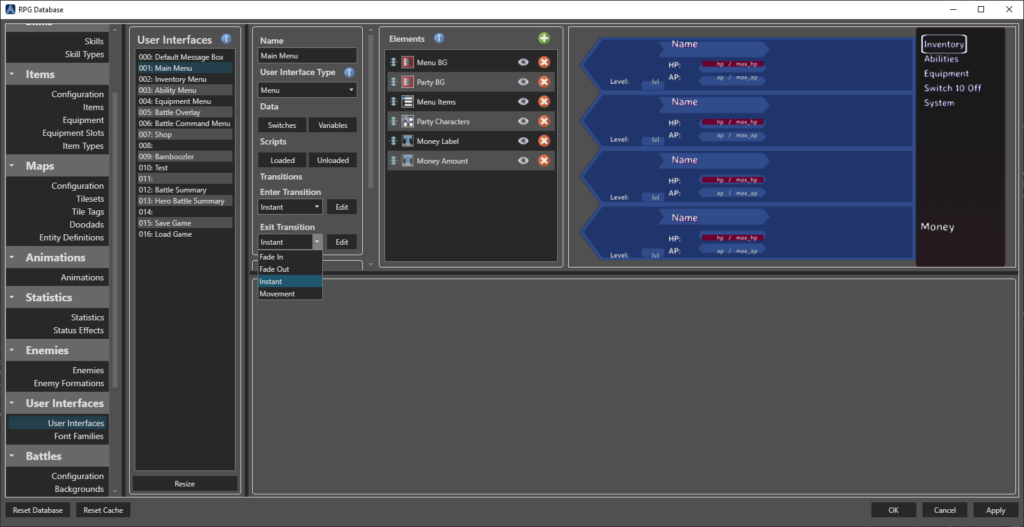
Entities got a major overhaul as well — and an “Entity Definition” option as well. What are Entity Definitions? Suppose you’re making an Action RPG and you’re going to make the same enemy over and over. With Local Variables and Switches, it’s easy to copy and paste them — but if you decide to rebalance your game later on, you would have to replace all of the Entities that you had copied and pasted over and over again.
Enter Entity Definitions. They are defined in the database, much like anything else, and then can be added during Entity mode on the map. You can then go back and rebalance the Entity Definition in the database. These are similar to prefabs or prototypes in other engines.
Now, you may be wondering, “What if I want to make a one-off Entity that is based on an Entity Definition?”
As luck would have it (or really just me anticipating this in advance), Entity Definitions that are placed on a map can then be instantiated and converted to a normal Entity. This copies the data from the database and throws it into the map. All links between the Entity Definition and Entity are broken — so you can edit away. It’s a really fancy way for making that one enemy that wears a weird hat — or a debug enemy.
This is especially useful when you want to make something like a treasure chest or something that is copied/reused often, but needs some modifications.
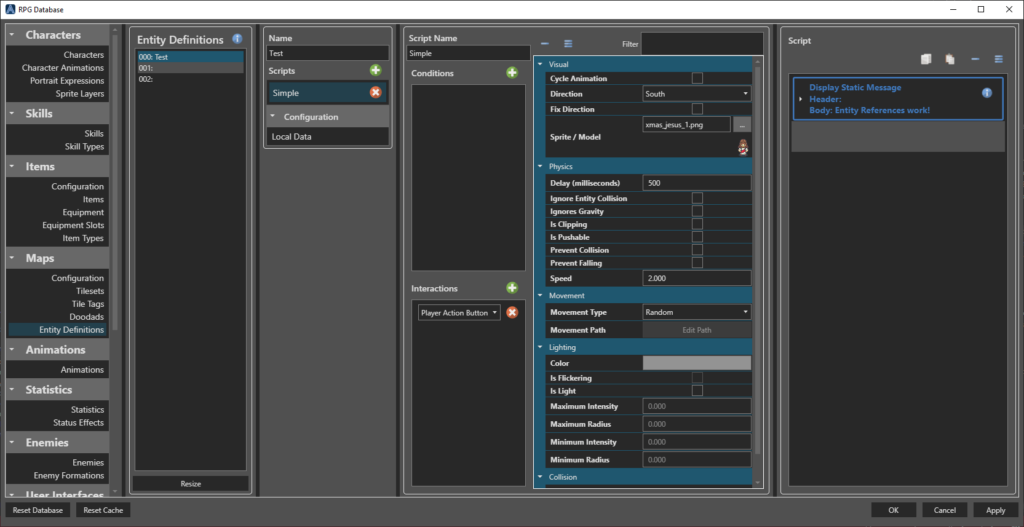
There was a little bit of a problem at the end of the month as Microsoft decided it was a great time to update Visual Studio and .NET 7.0 underneath me… which randomly broke file dependency and plugin injection, making RPG Architect unusable. There were a few days spent towards the end of the month. Thankfully, all is resolved now and things are working great.
With all of that combined, there was one more little addition… You may already have seen it in the menu above…

RPG Architect got an import tool, the RPG Architect Importer. Right now, it’s primarily geared towards importing tilesets into the new formatting standard that RPG Architect utilizes… but it will likely include more items later. Since this was one of the easier things to automate (but a pain for individual users), this was the lowest hanging fruit at the moment. In the future (far future), it may offer ability to import maps, music (via different audio formats), and more.
Next month, I’ll be visiting the battle system again, trying to consolidate and work thru various workflows that have been needing attention, including escaping from battle. I’ll likely work on a gauge control for the user interface, and potentially work on annotations for Entities and Characters. The caterpillar system that was noted last month might also be worth looking into as well for April. There will likely be a number of small workflow improvements as well, which had been asked for (in terms of asset importing and use). It’s going to be a very busy month if I can get all of that in.
That’s all for March!
As always:
Thank you so much for your support so far. I’m looking forward to building this community further and giving you the engine you may not have known you always wanted!
